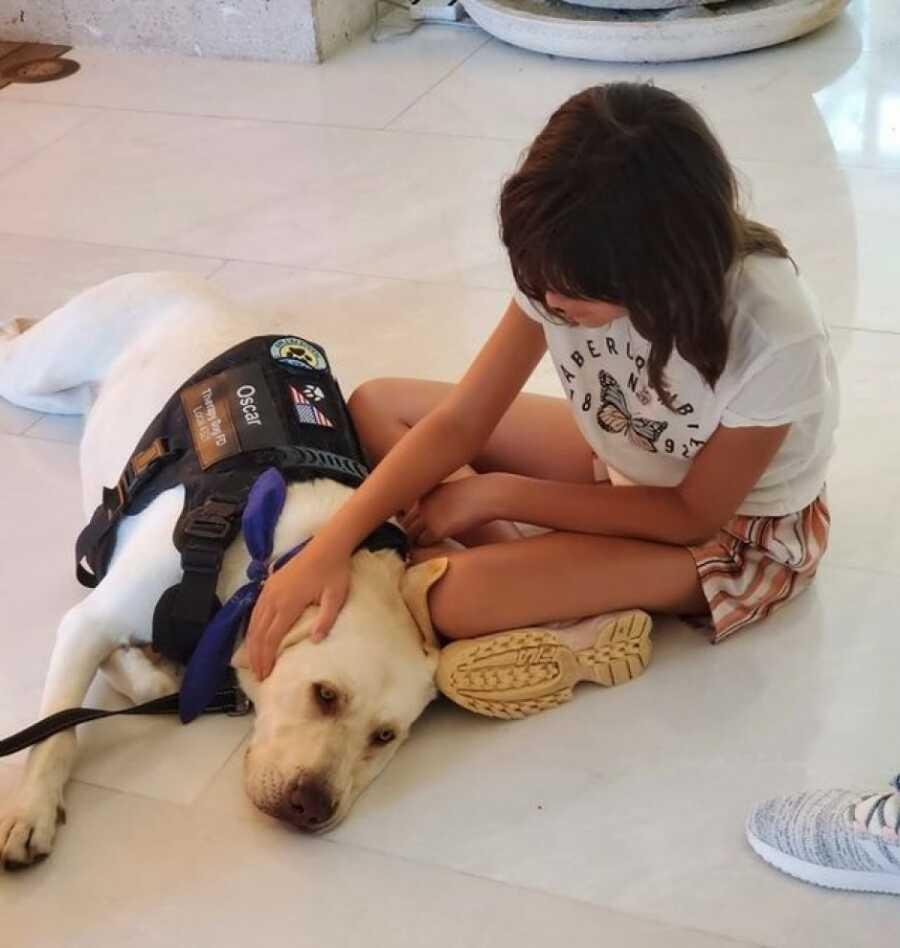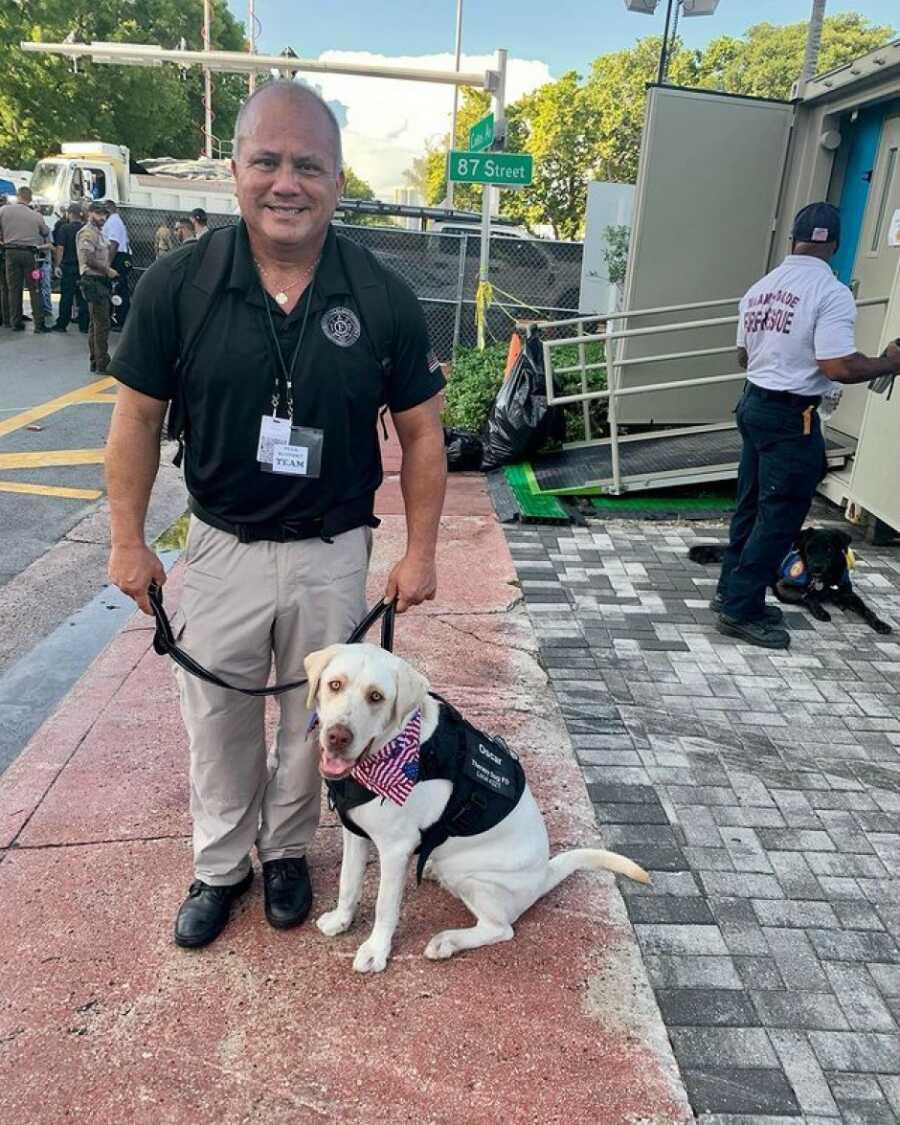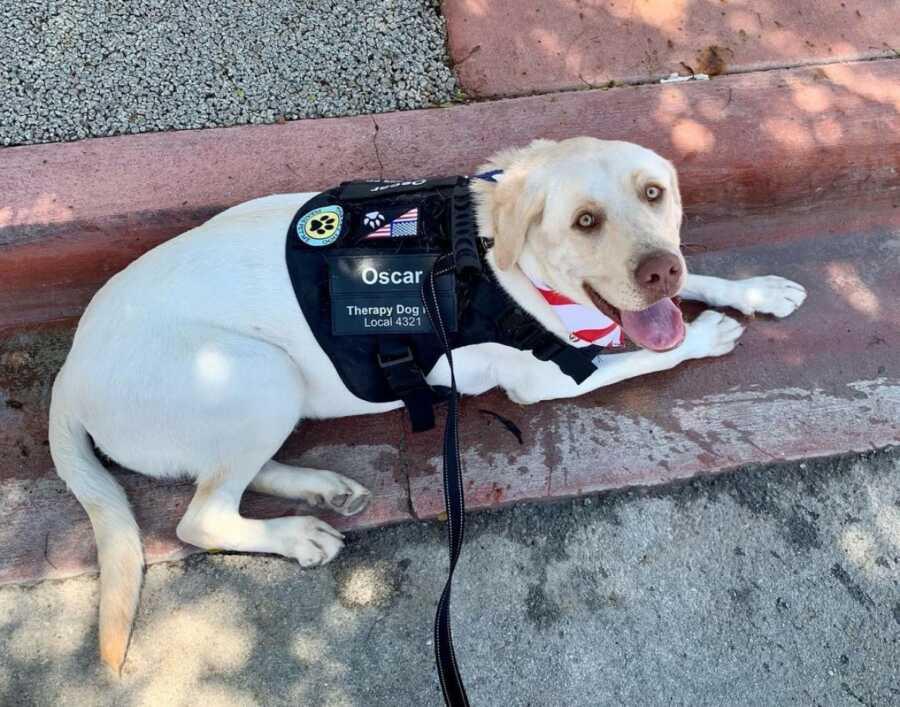
The Beginning Of The Recovery Process
On the day therapy dogs visited, Bobby experienced sensitive anxiety. He and other first responders from various regions had been undergoing inpatient treatment for a couple of weeks. In Bobby’s situation, he had successfully completed a painkillers course and was actively engaging in both intensive group and individual therapies.
At the midpoint of his treatment, Bobby found himself uneasy as he was thinking about things at home. His wife, understandably stressed, was single-handedly caring for their four young children under five. She managed her job during Bobby’s treatment. This reality contributed to Bobby’s anxiety, as he desired a recovery to resume his role as a father and provider for his family.

Courtesy of Kristina Robb-Dover
Routing Anxiety And Trauma while Working As A Corrections Officer
Bobby was no stranger to anxiety. Throughout their 13-year tenure as a corrections officer at a men’s prison near Boston, Massachusetts, he was anxious and hyper-vigilant. It had become a nearly constant aspect of his life.
Being prepared for various emergencies and traumatic incidents had become typical for Bobby. His responsibilities involved overseeing the “segregation unit,” which he described as a ‘prison within the prison.’ In this capacity, he dealt with the most severe and dangerous criminals.
In a recent interview, Bobby provided the responsibilities of corrections officers: “We are the police, the fire, and EMS inside the prison. I am a sheriff of a small town with all criminals, and you have got to keep the peace, put out some fires, and save some lives.”
Upon returning home from this work, Bobby faced a unique situation; his wife would then head to her job at the same prison. This situation increased Bobby’s fears and anxieties, increasing the attack of troubling ‘what if’ scenarios. Thinking about the threats his wife encountered at work, Bobby replayed these potential situations in his mind, even during his off-duty hours and while she was on duty. It often felt as though there was no escape from the negative.
Development of Painkiller Addiction
“I was in a hyper-vigilant state, constantly thinking of negative scenarios,” Bobby explained. “I could not shut my mind off.” To temporarily lessen these fears and worries, Bobby turned to prescription painkillers: “My only release was to take painkillers and be deprived of feeling for four hours.”
At the age of 36, Bobby’s initial encounter with painkillers occurred during shoulder surgery. However, a few years ago, he resumed taking them, but this time, it was to manage the mental and emotional stress associated with his job.

Courtesy of Kristina Robb-Dover
Seeking Support for Addiction
Following a period in rehab three years ago, Bobby successfully maintained seriousness for a year and a half before experiencing a relapse. “Life was escalating back into chaos, and I caught myself before it got completely out of control,” Bobby recalled.
He told his wife about this, who, in turn, reached out to a caseworker. This caseworker directed them to ‘Shatterproof,’ a specialized treatment program for first responders. Without delay, Bobby was referred to a rehabilitation center.
The Comforting Influence of Therapy Dogs
The therapy dogs that made a presence on the day Bobby was coping with anxiety did not know his personal story or that of the other first responders present. Their purpose was simple: to extend love and support through friendly sniffs and silent invitations for affection.
Reflecting on the immediate impact of the dogs, Bobby shared, “I somehow managed to deal with a lot of work and cleaning up the remains of my conduct. I had anxiety and a lot of disturbed state of mind. When the dogs came in, it made me forget all that stuff, and I could focus on the dogs. They came up to me, sniffing and inviting me to pet them, instantly calming me down.” The overall outcome was a profound shift, enabling Bobby to ‘forget everything that is going on’ and be more present in the room, enhancing his ability to concentrate on recovery.
Bobby’s experience with the dogs was common. He observed, “When the dogs come in, you could instantly see everyone relax. Everyone was relaxing, smiling, and petting them.” Bobby drew similar effects with his line of work: “Even the most dangerous persons guilty of crimes in prison, big stubborn guys, relaxed and smile and say hello to therapy dogs.”

Courtesy of Kristina Robb-Dover
The Nature of Recovery
After dedicating over a month to treatment, where he meticulously worked on ‘ solving problems on the inside’ and considering the emotional triggers of drug use, Bobby now holds a new and more positive mindset. In the past, he found himself automatically responding to various events with negativity. However, his therapeutic work has enabled him to reframe many of these situations.
For example, he related that earlier in the year, he gave a call to his daughter at work to wish her a happy birthday. Just minutes before, he and his coworkers had responded to an inmate attempting suicide by hanging. That man turned blue when Bobby and his colleagues intervened and saved his life. Thirty minutes later, that same crew joined Bobby in singing ‘Happy Birthday’ to his daughter.
Reflecting on how he would have observed this experience before treatment, Bobby admitted, “I looked at that experience negatively.” However, his therapist pointed out, “It is happy to see that you sang Happy Birthday to your daughter after a traumatic event,” encouraging Bobby to start learning how to shift his perspective from negative to positive.
Today, Bobby expresses gratitude for his recovery and feels hopeful about the future. He can also look back with appreciation at the impact of a couple of dogs that visited him one day during rehab and played a role in improving his well-being.

Courtesy of Kristina Robb-Dover
